The U.S. State Department has approved a possible Foreign Military Sale to Canada of Joint Light Tactical Vehicles (JLTVs) and associated equipment worth an estimated $160 million, according to a notice from the Defense Security Cooperation Agency (DSCA).
The proposed package includes up to 60 JLTVs and nine JLTV cargo trailers. Also covered are communications systems, mobility and survivability enhancements, spare and repair parts, special tools and test equipment, technical manuals, maintenance trainers, and training support. U.S. government and contractor personnel will provide technical, engineering, and logistics assistance as part of the deal.
The DSCA said the proposed sale would “support the foreign policy and national security objectives of the United States by helping to improve the military capability of Canada, a NATO Ally that is an important force for ensuring political stability and economic progress, and a contributor to military, peacekeeping, and humanitarian operations around the world.”
According to the agency, the sale will bolster Canada’s ability to respond to current and emerging threats while enhancing its capacity to operate in complex and rapidly changing environments. The transfer is also framed as a contribution to “increased burden-sharing with allies and partners in support of peace operations and peacekeeping around the world.”
Canada is not expected to face any difficulties in absorbing the vehicles and services into its armed forces. DSCA emphasised that the sale will not alter the basic military balance in the region.
The prime contractor will be AM General, LLC, with facilities in Auburn Hills, Michigan, and Mishawaka, Indiana. As is customary, any offset agreements will be determined in negotiations between the Canadian government and AM General.
Implementation of the sale is projected to involve multiple trips to Canada by up to 15 U.S. government officials and 20 contractor representatives over a period of up to six years. These teams will manage fielding, training, and logistics support throughout the program’s lifecycle.



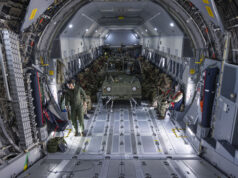



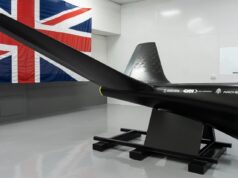
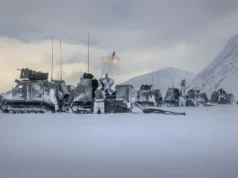

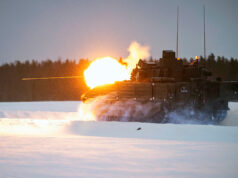

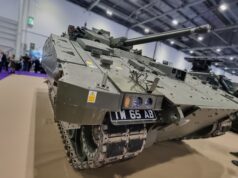

Why did the Army not get on and buy this years ago?
I thought we were going to get them at a good price due to economies of scale by tapping into the huge US order.
What went wrong? The usual mooted Army paralysation in fear of buying something that turns out to be the wrong choice or financial pressures elsewhere?
Can’t remember off the top of my head but JLTV was looked at, I think maybe it was too expensive. At 3 million a pop it’s not far off the cost of a CR3.
Ok! I had no idea they had that price.
That’s a lot more than I realised..!
You don’t happen to know what Foxhound costs per unit, do you..?
IIRC a bit less than a million£ per (like 7-800,000 I think?) but that was back when the production line was hot. Probably a bit more expensive now on a of lower production rate.
TBF 3 million includes a lot of extras that the Canadians are getting, but it’s still going to be 2-3x the cost of a Foxhound.
Hi Daniele, I heard there was some significant cost increase on them that chilled the Army’s interest/justification for the order- but beyond that not heard anything for ages now…
Hopefully someone else will have a bit more knowledge!
Thanks Joe.
Per Wiki, current base price of JLTV per unit varies from $370K to $399K, depending upon features specified. Even w/ ancillary equipment and a complete logistics package included in the contract estimate, predict that a very healthy profit will be realized. Dunno, Uncle Sugar addressing trade imbalance, one weapon system contract at a time? 🤔😳😉
(Also that figure comes from an article that cites the “expected” price of a JLTV about a decade ago, one would expect that that has slipped northwards considerably, and maybe why the MoD’s interest wanes).
Too expensive and we decided to develop and build our own. Which means in 15 years time we will get a recycled Landrover.
For 5 million each.
Foxhound is more or less an equivalent to JLTV I think, we could do worse getting that!
JLTV is actually a bit different in role to Foxhound. Slightly insanely it’s actually bigger than Foxhound (6×2.5×2.5 vs 5.3x2x2.3). Despite this Foxhound is closer to an APC than JLTV. JLTV has basically the same layout as a Hatchback, 5 doors, 4 seats and a sunroof, so typcially it’s crew is a Commander, Driver, 2 Dismounts and maybe a gunner (depending on load out). Foxhound on the other hand is more of an infantry carrier. Despite being smaller it has room in the back for 4 dismounts (facing eachother and with a rear door so exiting the vehicle is easier under fire), and although it’s a squeeze if all 4 dismount seats are taken, theoretically 2 gunners.
Hi Dern, I had two Foxhounds in Afghan for my Team, with each carrying four personnel. The vehicles were brand new straight off the C17. Delivered with a rudimentary RWS mounting a GPMG with a day camera, that had some night time capability, but not great (no thermal/IR). This was in the position above the commander, which kept the two top hatches free over the rear of the cabin. This position is now used for multiple radio antennas. Ours also had a rear plank similar to the one used by the CVR(t)s, that was used for the jammers etc. We did have a few teething issues with the vehicles, but these were fixed in the field.
There is enough space for four pax in the rear, though storing Bergens is a bit of an issue, especially when carrying box loads of ammo and other kit. With two in the back, this wasn’t an issue. We did pick up a patrol that needed an extract and managed to squeeze in 6 in the back of each vehicle, on top of our two guys already in the back. Whoever wrote the requirement for the vehicle to come with a BV, deserves a beer! Seriously mugged off the Canadians we were with, who always asked if they could use it.
I have since seen videos on YouTube stating they couldn’t have a RWS fitted, as it would ,make the vehicle too top heavy. Don’t know if that’s true with a more modern RWS, that has a lot more sensors on it, or mounts a 50 cal/40mm GMG. The one we had fitted was good enough. Also in some of the videos they say the armour is pretty poor. Which is where I beg to differ. The composite armour was sufficient enough to stop armour piercing 7.62 fired from PKMs. Never took a RPG, though a couple were close and we somehow didn’t get hit by IEDs, though the Canadians with us in their Nyala did. I believe as it had lots of glass windows in the cabin, and the Taliban could see who/what was inside, it significantly attracted more fire.
Coming from a LL WMIK, they were a really great bit of kit.
Thanks for the “User Review” Davey!
Sounds like a decent option for procurement- and I think experience in Ukraine bears out the need for something like it for deployed forces still. Will have to see what spare cash there is…
No problem. The Foxhound is quite a tall vehicle, much higher than a JLTV. I remember how it towered over Humvees. In an asymmetrical conflict this was useful, as it gave the guys in the back a very good vantage point to look over walls etc. A lot of that height is due to the v-hull.
Hi Davey, I was briefly mounted on Foxhound in 17-18, but my personal ride was a Land Rover in the Recce platoon so I rarely rode in them, mostly just peaking in, once helping guys who’d rolled one, and occasionally sheltering in them when colocated. We also got rid of them after I did only one exercise so, yeah. I’ve seen both hatches with very rudimentary GPMG’s mounted, but from my memory of the interior I think it would be awkward manning both while having all four seats filled. (And yes certainly much more spacious than sitting in a RWMIK or the back of an FFR, warmer too!)
In my mind JLTV is very similar to Husky, which we also had. You definitely wouldn’t pick up a 6 pax patrol with one of those!
Thanks, I hadn’t realised to be honest- I wonder if the bigger size is a product of an American mentality, or actually translates into better protection..?!
Foxhound sounds like the more utilitarian platform, even for the role as a Land Rover replacement (or armoured Land Rover, at least). I can’t see why we’d go for the ultimate compact crossover SUV just to have that seating arrangement for a higher price- unless I’m missing something?
Hopefully the MOD’s attention hasn’t wandered too far from this requirement and we’ll see an order for a bunch more Foxhound soon. Or something- the capability just needs to be filled!
Likewise. I was surprised reading that, that a Foxhound is smaller.
Not just that the Foxhound is smaller- but also how huge JLTV is! Compare with a Stryker APC:
JLTV: 6 x 2.5 x 2.5
Stryker (Wiki): 6.9 x 2.7 x 2.6
That is truly a HMMV replacement built for US bases and the desert, not Europe…
https ://upload.wikimedia. org/wikipedia/commons/8/89/Humvee_vs_JLTV_comparison .jpg
They look massive next to a Humvee, and Humvee’s are not small! There’s an image of a JLTV next to a M1 Abrams (image sharing wont accept the file type but if you google it you’ll probably find it). The M1 is obviously bigger, but the JLTV isn’t a slouch in that competition.
If you’re driving that thing and you go into a narrow middle eastern street, let alone a European street, or down a narrow hedgrowed lane you’ll be in for a fun time.
As for MRV-P, a lot of the requirement will hopefully be covered by LPM and MPM in the LMP program.
The turret gunner in the JLTV would pretty much be able to look the tank commander in the eye! I wonder how much of that support package for Canada was touch-up paint for the bumpers…
Thanks for that, I didn’t realise the Army had already created a new programme for getting their vehicles sorted (at least, it seems to be a new programme compared to the previous one from 2022 and before?), with a whole bunch of new acronyms. I’m not a fan of the way that ‘P’ can mean either ‘Protected’ or ‘Platform’, that gets confusing.
Update, did a bit of trawling and found this on Shephard Media from 2022:
A spokesperson for the UK MoD confirmed to Shephard that the army has ended the proposed MRV-P Package 1, which comprised acquisition of JLTVs. ‘This difficult decision took into consideration affordability and the requirement to deliver several major army programmes within the same period,’ the official stressed.
It was added that the requirement for MRV-P platforms is ‘extant and will be considered within a revised Protected Mobility strategy,’ which is currently in its concept phase.
So it sounds like they’ve dropped it due to price, without actively pursuing an alternative until they provide us with a new Strategy, which I imagine will be something like the 9th without a firm order for equipment attached to it if my memory of Think Defence’s article on light vehicles serves me…
Thanks mate.
So basically like the 432s, kick the can down the road for a few more years, while shouting about things like Ch3, Boxer, Ajax.
That seems to be the size of it…
But don’t worry, the lads can ride around straddling the launch boxes on those new Land Ceptor launchers we’ve just ordered!
“…a NATO Ally that is an important force for ensuring political stability and economic progress…”
Hmm, can the same still be said about the US? 😉
It is the most positive thing i have seen officially coming from the US about Canada in over a year.
It’s just a standard phrase that the DSCA uses when approving a FMS; they have a few different stock phrases to plug into announcements depending on the country the sale is approved for. It means nothing really.
Yep, I know. Just a copy and paste statement from the department.
Just to add to the article, these vehicles will go to the army’s special forces not the Regular Forces.
Surprised the Canadians didn’t consider the Australian produced Thales Hawkei given they seem to be looking for non-U.S. suppliers.
JLTV and Hawkei are similar in role, weight (Hawkei can carry a slightly bigger payload), dimensions and crew numbers.
Hawkei has an advanced battlefield management and comms system (acts as a networked node) and a significant number in ADF service are fitted with RWS.
Also a Ute variant for cargo and specialist applications. As part of the ADFs NASAM GBAD system Hawkei are used both as a mobile missile launch platform (4x AMRAAM) and mobile radar (ground based variant of CEAFAR).
It’s a current hot production line and costs less per unit (1.18 million AUD or 0.76 million USD).
So much for CANZUK
CANZUK is not dead my friend. The $6 billion purchase of the Aussie radar by Canada shows the CAF is shopping around , especially around the Commonwealth and the T26 project is another example of cooperation.
The Canadian DND is now awash with money and the PM is looking everywhere for military deals. Australia has a lot to offer as does Canada. 🙂
Canada needs to raise its %GDP spending on defence, nothing more driving defence spending than this! Italy did the same by building a bridge to Sicily to raise its defence spending.
It just did. DnD has the money and the brass is sorting out the new kit and staffing.
Canadian herre. This may be a great piece of gear but it’s American and should be excluded for that reason alone. Canada should not be buying anything from the USA when we could buy Australian, or European.
Where does the Nurol Makina ‘plant’ in Lemmington Spa fit in?